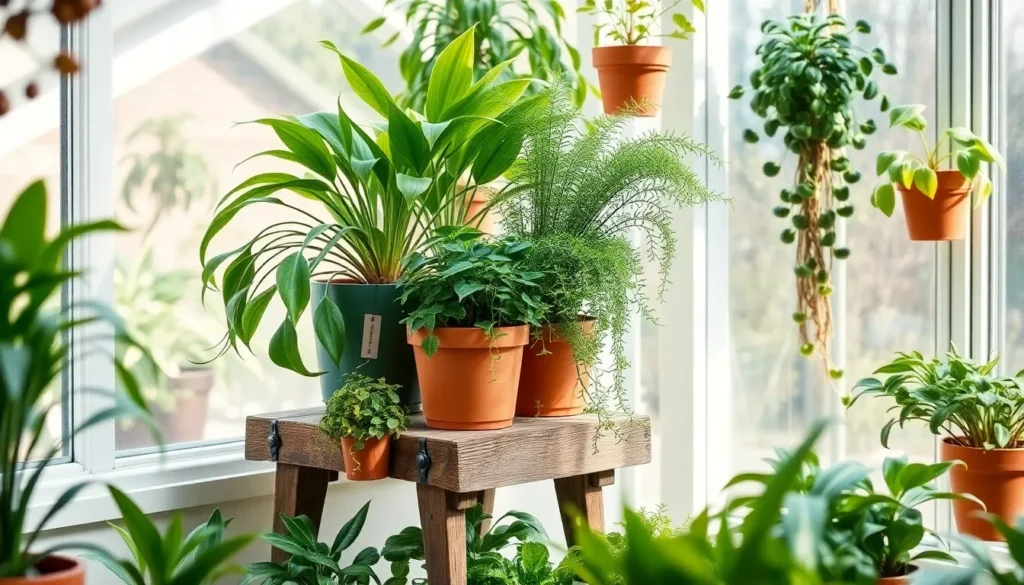Welcoming a lush touch of greenery into your home doesn’t have to be a daunting task, especially when ensuring the safety of your furry friends. Whether you’re a seasoned gardener or just starting your green thumb journey, choosing pet-safe plants can transform your living space into a vibrant sanctuary without compromising the well-being of your beloved companions.
Understanding the importance of pet-safe plants is crucial for any plant enthusiast who shares a home with curious animals. This article will guide you through eight delightful plant options that are as safe as they are beautiful, offering both peace of mind and a splash of natural charm to your interiors.
You’ll discover plants that are not only easy to care for but also resilient enough to thrive in diverse home environments. From the classic allure of the Spider Plant to the striking elegance of the Parlor Palm, each selection promises to be a delightful addition to your indoor garden.
Introduction to Pet-Safe Plants
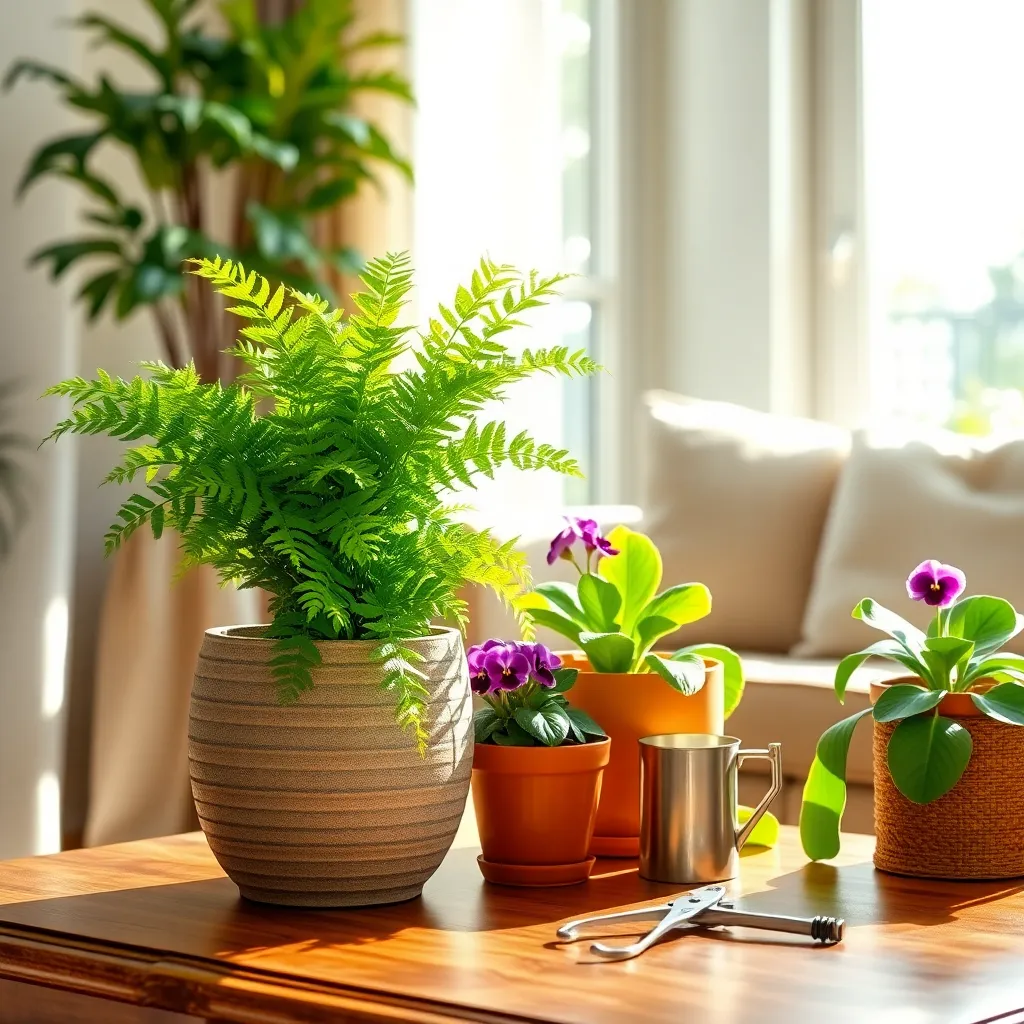
Introducing pet-safe plants into your home can provide a lush and vibrant environment without compromising the safety of your furry friends. These plants are non-toxic to animals, making them a perfect choice for those who share their space with pets.
Many pet-safe plants are also easy to care for, making them suitable for beginner gardeners. For example, the Parlor Palm thrives in indirect light and requires watering only when the top inch of soil feels dry, making it a low-maintenance option.
To ensure your plants remain healthy, consider their specific growing conditions. Most pet-safe plants prefer well-draining soil and benefit from a pot with adequate drainage holes to prevent water from pooling around the roots.
For those looking to expand their gardening skills, experimenting with different types of pet-safe plants can be rewarding. Try growing a Spider Plant, which not only purifies the air but also produces “pups” that can be propagated to enhance your indoor garden.
Spider Plant: A Pet-Friendly Classic
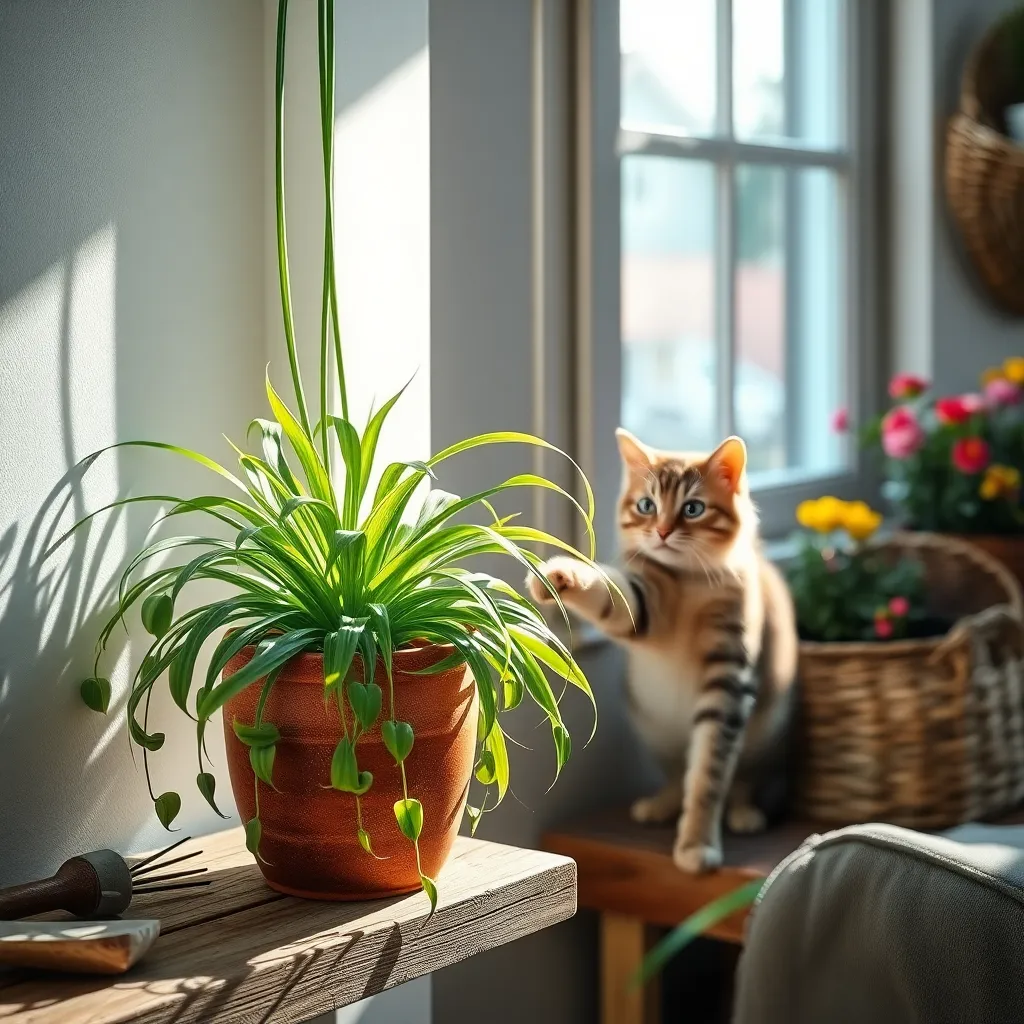
The Spider Plant, known scientifically as *Chlorophytum comosum*, is a hardy and attractive option for pet owners. Recognized for its arching green leaves with white stripes, this plant is not only visually appealing but also non-toxic to cats and dogs, making it a safe choice for households with curious pets.
To thrive, Spider Plants prefer bright, indirect light but can tolerate lower light conditions, making them versatile for various spots in your home. For optimal growth, use a well-draining potting mix and ensure the pot has drainage holes to prevent root rot.
Watering should be moderate, keeping the soil slightly moist but not soggy; typically, watering every 1-2 weeks is sufficient, adjusting based on humidity and light conditions. Advanced gardeners might consider feeding the plant with a balanced liquid fertilizer every 4-6 weeks during the growing season to encourage robust foliage.
If you’re interested in propagation, Spider Plants are excellent for this as they produce “babies” or plantlets that can easily be potted once roots form. Simply place the plantlet in water or directly into soil, ensuring it stays moist until established. This allows you to expand your collection or share with friends, making Spider Plants not just a pet-friendly classic, but also a generous one.
Areca Palm: Tropical and Safe
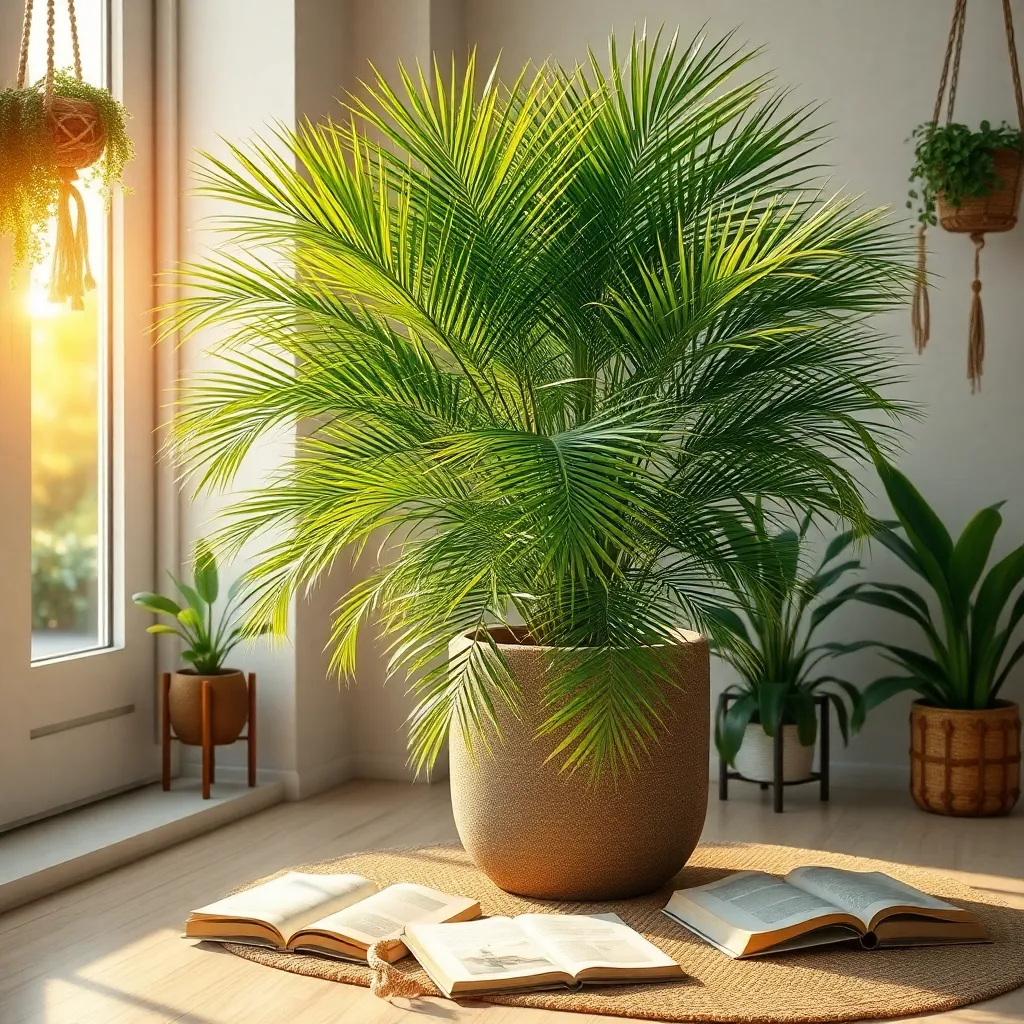
Adding an Areca Palm to your home can instantly create a lush, tropical atmosphere while being safe for pets. Known for its feathery, arching fronds, this plant thrives in bright, indirect light, making it a versatile choice for various indoor settings.
For best results, water your Areca Palm when the top inch of soil feels dry, ensuring it remains consistently moist but not soggy. Use a well-draining potting mix to prevent waterlogging and promote healthy root growth.
Temperature is crucial, so keep your Areca Palm in a warm environment, ideally between 65°F and 75°F. Avoid placing it near drafty windows or air vents, as sudden temperature changes can stress the plant.
Advanced gardeners might consider occasional misting to mimic the humid conditions of its native habitat, enhancing the vibrancy of the foliage. Fertilize monthly during the growing season with a balanced, water-soluble fertilizer to ensure lush growth.
Boston Fern: Lush and Non-Toxic

The Boston Fern is an excellent choice for those looking to add lush greenery to their homes without worrying about pet safety. This plant is not only visually appealing but also non-toxic to cats and dogs, making it a popular option among pet owners.
For optimal growth, Boston Ferns thrive in environments with high humidity and indirect light. A great way to maintain the necessary humidity is to place the plant on a tray filled with pebbles and water, ensuring that the pot itself is not sitting directly in the water.
Watering is crucial, and the soil should be kept consistently moist but not soggy. Consider using a well-draining potting mix, perhaps one containing peat moss, to help retain moisture while preventing waterlogging.
Regular misting can also help maintain humidity levels, especially during dry winter months. For those looking to expand their gardening skills, propagate your Boston Fern by dividing the plant during repotting, ideally in the spring.
Calathea: Vibrant and Pet-Safe
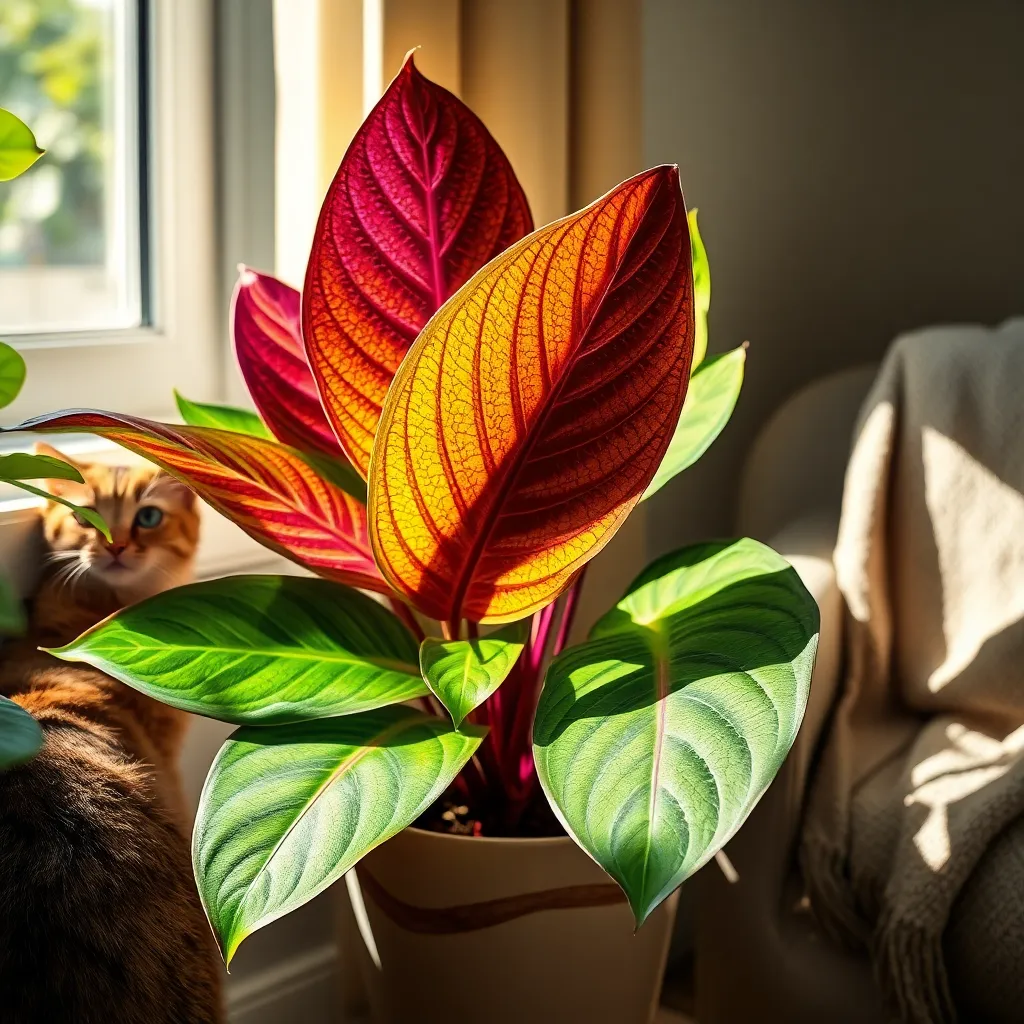
Calatheas, known for their stunning foliage, are perfect for adding a vibrant touch to your home without worrying about your pets. These plants thrive in indirect light, making them ideal for spaces where direct sunlight can be limited.
When it comes to watering, Calatheas prefer consistently moist soil but not waterlogged conditions. To achieve this, it’s beneficial to use a potting mix that retains moisture while providing good drainage, such as a mix of peat moss, perlite, and potting soil.
Avoid placing Calatheas near drafts or in environments with fluctuating temperatures, as they thrive in stable, humid conditions. Consider using a humidifier or placing a tray of water near the plant to maintain the humidity it craves, especially during the dry winter months.
For those looking to take their care skills a step further, regularly cleaning the leaves gently with a damp cloth can encourage healthier growth by allowing the plant to photosynthesize more efficiently. Fertilize your Calathea every month during the growing season with a diluted, balanced liquid fertilizer to support its growth and vibrant coloration.
African Violet: Colorful and Harmless
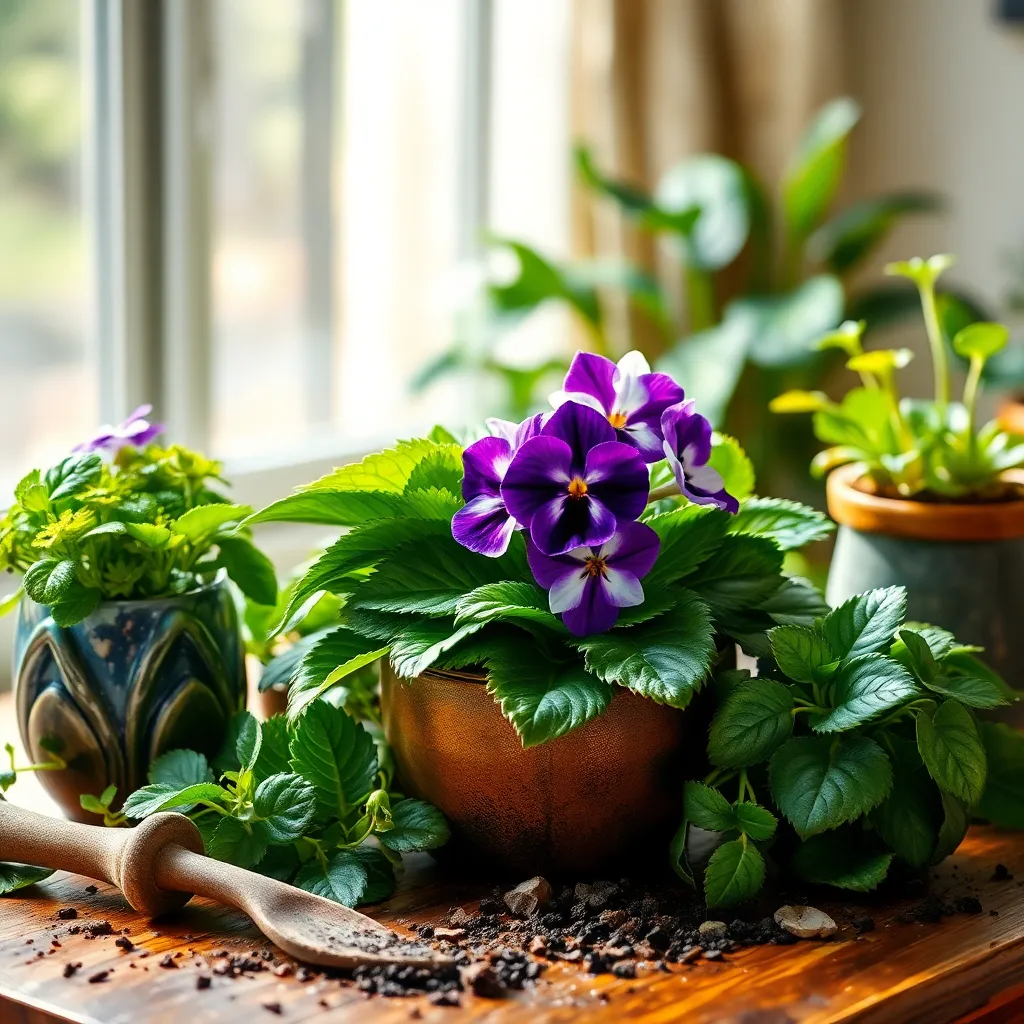
African Violets are a delightful addition to any home, offering a splash of color without posing any risk to pets. These charming plants thrive indoors, making them perfect for windowsills where they can enjoy bright, indirect light.
To keep your African Violet healthy, water it carefully by allowing the soil to dry slightly between waterings—overwatering is a common mistake. Use a well-draining potting mix, ideally one formulated specifically for African Violets, to ensure they receive proper aeration.
For those looking to enhance their plant care skills, consider fertilizing African Violets with a balanced, water-soluble fertilizer every 4 to 6 weeks. Additionally, regularly remove spent blooms and dead leaves to encourage new growth and maintain the plant’s vibrant appearance.
These plants enjoy a warm environment, ideally between 65°F and 75°F, and they dislike cold drafts. If you notice the leaves turning brown at the edges, it might be a sign of low humidity; placing a small humidifier nearby can help maintain optimal conditions.
Bamboo Palm: Elegant and Safe
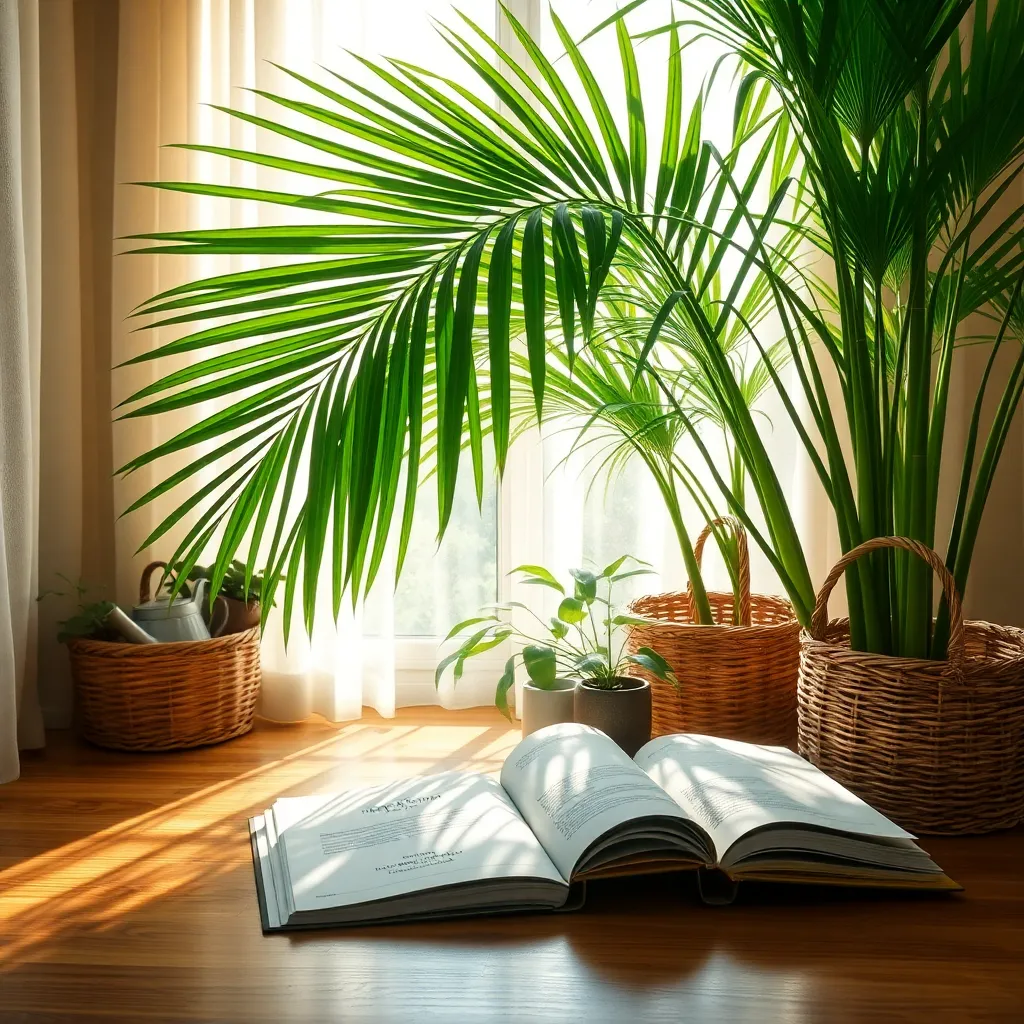
The Bamboo Palm, also known as Chamaedorea seifrizii, is an elegant plant that is also safe for pets, making it a perfect addition to any home. Known for its graceful, arching fronds, this palm can bring a touch of the tropics to your interior spaces.
Thriving in low to medium light conditions, Bamboo Palms are well-suited for indoor environments with indirect sunlight. For best results, place your palm in a location where it receives filtered light and avoid direct sunlight, which can scorch its leaves.
Maintaining the right watering schedule is crucial for the health of your Bamboo Palm. Water the plant when the top inch of soil feels dry, ensuring good drainage to prevent root rot.
For optimal growth, use a well-draining potting mix rich in organic matter. A mix of peat, perlite, and sand works well, providing the aeration and drainage these palms require.
While Bamboo Palms are relatively low-maintenance, occasional fertilization can enhance their growth. Feed them with a balanced, diluted liquid fertilizer once every month during the growing season to keep them lush and vibrant.
Tips for Pet-Friendly Plant Care
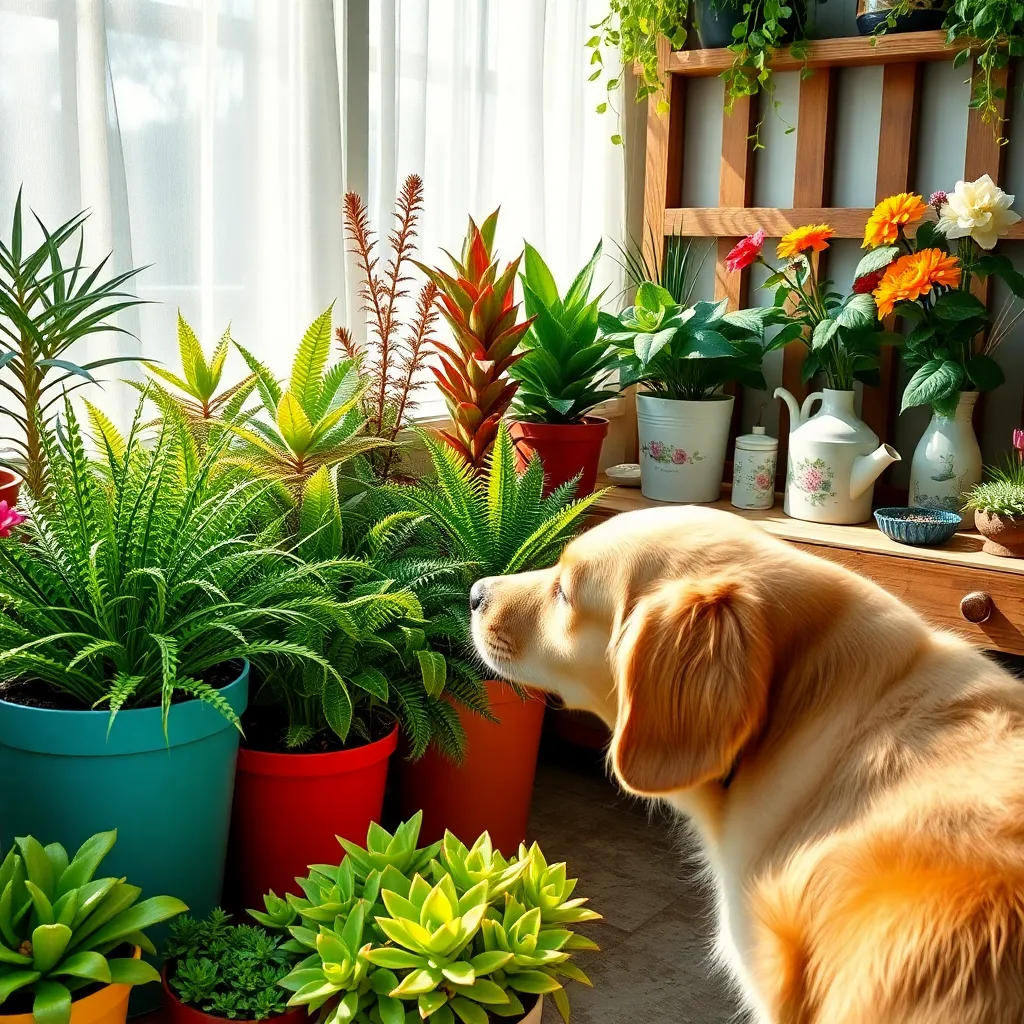
Creating a pet-friendly garden is both rewarding and safe for your furry companions. Start by choosing non-toxic plants that thrive in various indoor environments, ensuring your pets can explore without risk.
When caring for these plants, use soil that drains well to prevent root rot, which can be common in overwatered indoor plants. Consider a mix of peat and perlite to achieve the right balance of moisture retention and drainage.
Watering is crucial to plant health, but too much can be harmful. As a rule of thumb, water your pet-safe plants when the top inch of soil feels dry to the touch, ensuring they stay hydrated without being waterlogged.
Place your plants in areas with bright, indirect sunlight for optimal growth. While many pet-safe plants are adaptable, excessive direct sunlight can scorch their leaves, affecting their overall appearance and health.
Regular pruning can help maintain the shape and health of your plants. Use clean, sharp scissors to remove any dead or yellowing leaves, allowing new growth to flourish effortlessly.
Fertilizing your plants every few months can provide essential nutrients for vibrant growth. Opt for a balanced, water-soluble fertilizer and follow package instructions to avoid overfeeding and damaging your plants.
Advanced gardeners might try propagating their pet-safe plants to expand their collection. Use stem cuttings in water or soil to encourage root development, offering a sustainable way to enhance your indoor garden.
Lastly, keep a close eye on your plants for any signs of pest infestations. If pests appear, wipe leaves gently with a damp cloth or use a mild insecticidal soap to keep your plants healthy and safe for pets.
Conclusion: Growing Success with These Plants
As we journey through the delightful world of pet-safe plants, we’ve uncovered eight charming companions that enrich our homes and nurture our relationships with our beloved pets. From the resilient Spider Plant to the vibrant African Violet, each plant not only adds beauty but also promotes a harmonious environment where love and growth intertwine. These plants symbolize trust, adaptability, and nurturing—core principles that strengthen the bonds with our furry friends and loved ones.
Now, take a moment to embrace this newfound knowledge by visiting a local nursery or exploring online options to bring one of these green gems into your home. As you nurture these plants, you’ll cultivate an atmosphere of care and connection, enhancing your relationships with both people and pets.
Remember to bookmark this article as your go-to guide for creating a pet-friendly, plant-filled haven. By doing so, you ensure that you’re always equipped to foster an environment of love and safety.
As you embark on this journey, envision a future where your relationships flourish, grounded in the same principles of care and attention you’ve shown today. Your commitment to nurturing both your plants and relationships paves the way for lasting joy and harmony.

